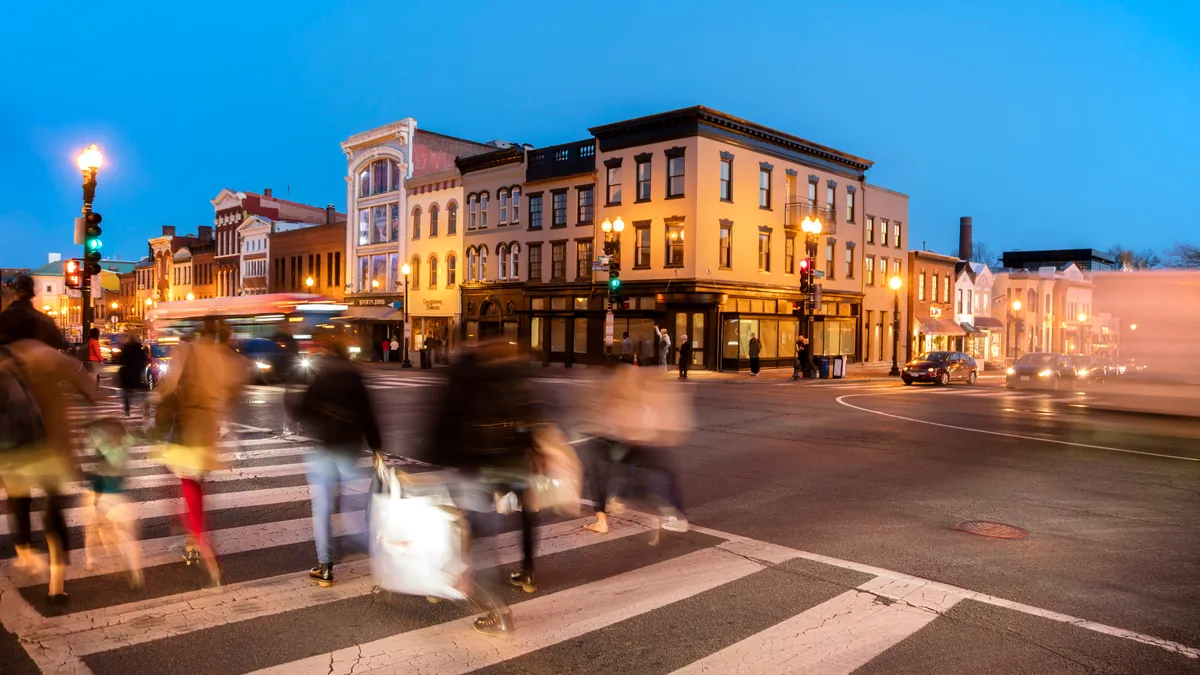Dive Brief:
- Washington, D.C. last month, along with Boston and two other international cities, joined an approximately four-month pilot aimed at growing trust in increasingly digitized public spaces through visual icons and QR codes that inform the public of nearby technology like sensors and cameras.
- The cities are piloting Digital Trust for Places and Routines (DTPR), an open-source communication standard for transparency and accountability around digital technology. According to a press release from Helpful Places, the consulting group coordinating the pilot, testing the standard will help residents “understand and interact with smart technologies installed in their cities.”
- A spokesperson for the District Department of Transportation (DDOT), which serves Washington, D.C., said in an email that signs using the DTPR visual language will be located near intersections where new technology is being piloted for bike and pedestrian safety. The signs and accompanying web pages inform users what data the technology is collecting, who’s collecting it, and what it’s being used for.
Dive Insight:
The pilot, considered the first-of-its-kind, will utilize visual symbols and QR codes to explain the technology, like cameras and sensors, that collect data within cities. New DTPR signs will be installed across the District of Columbia, Boston, the town of Innisfil, Canada and the Angers- Loire region in France — communicating what these technologies are. It will also collect data on how the technologies are being perceived in the community and inform how they are used in the future, according to DDOT.
In Washington, D.C. signs will have QR codes and URLs to access a webpage that provides such background, as well as an email address, and online surveys to input questions and comments about the technologies being tested, according to DDOT. The department will also conduct in-person surveys with pedestrians. The DDOT spokesperson said the city was contributing $10,000 to the program from their research program funding.
This current cohort was developed by Helpful Places, which seeks to help organizations and communities reap the benefits of technology, partly through the adoption and stewardship of DTPR language.
The communication system was experimented with for the first time in Boston, during a previous, short-term collaboration in the summer of 2020. That helped Helpful Places understand what would be involved in deploying the system in an actual city, said Jackie Lu, president and co-founder of Helpful Places, in an email.
“DTPR helps increase transparency and trust by first making the invisible digital systems that are everywhere in the spaces around us visible, and ideally, legible to people,” wrote Lu.
The goal of Helpful Places is for people to visualize and understand the tech that is already around them, so they can ask questions without feeling overwhelmed. She added that the current challenges with trusting tech, such as sensors in cities, is that it’s difficult to find out what such sensors and cameras do – or who’s accountable for putting them there and using the data they collect – which DTPR language and access could help solve.











